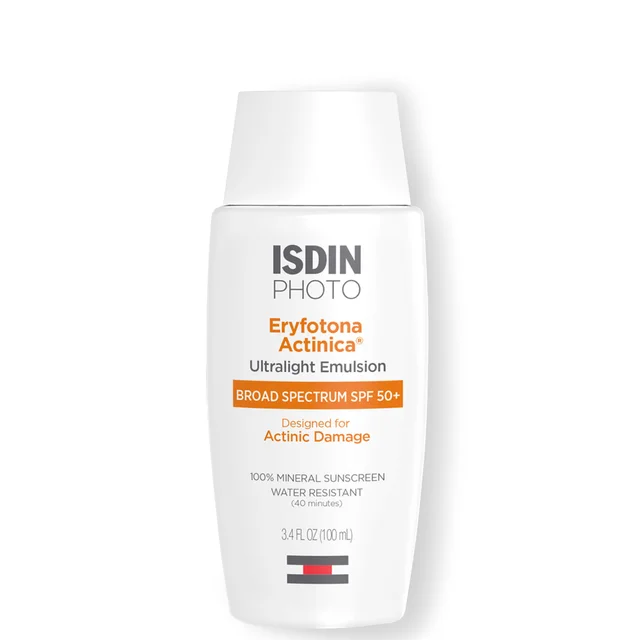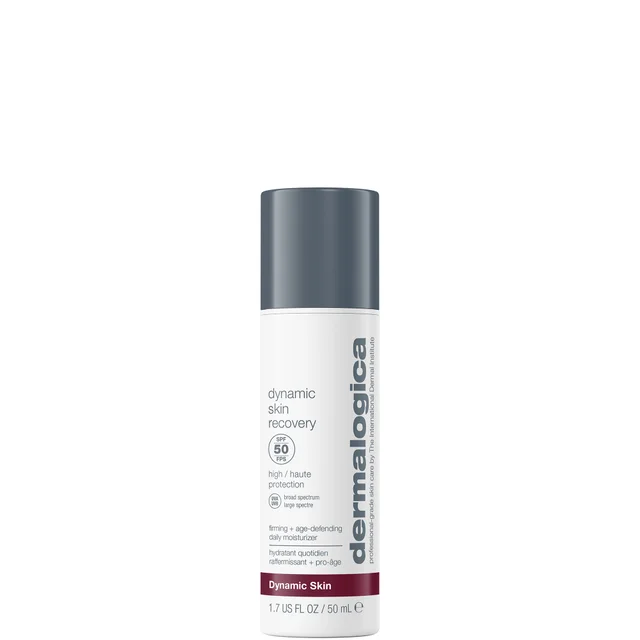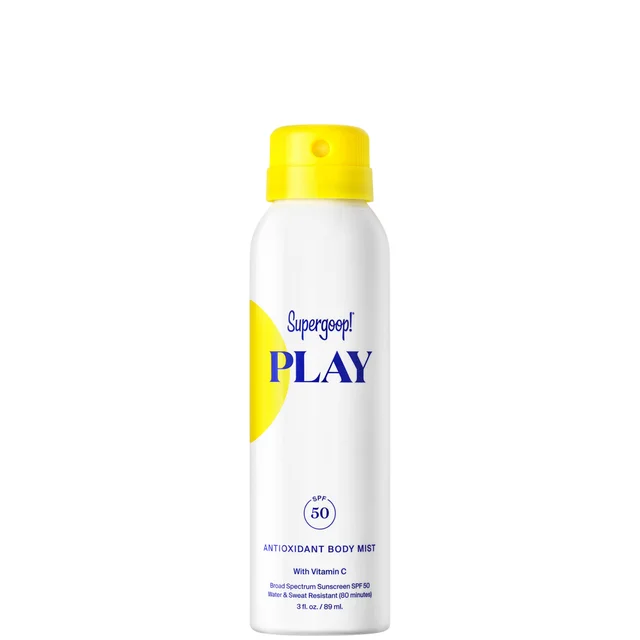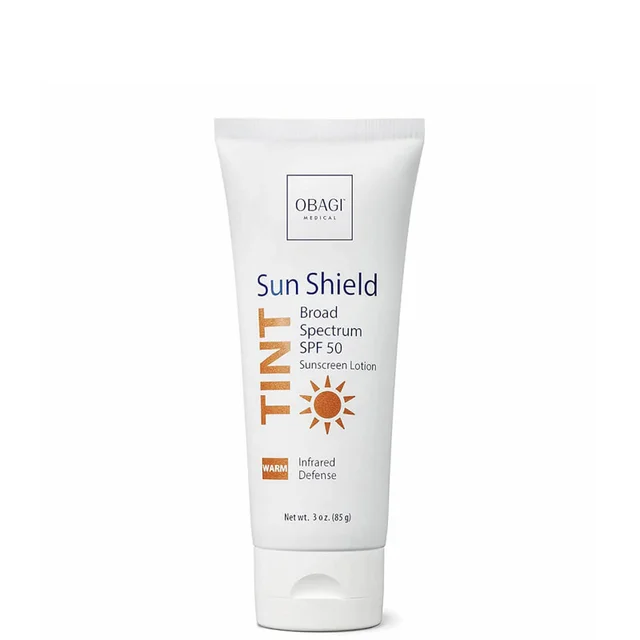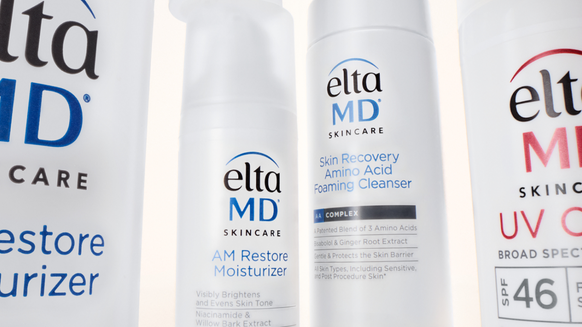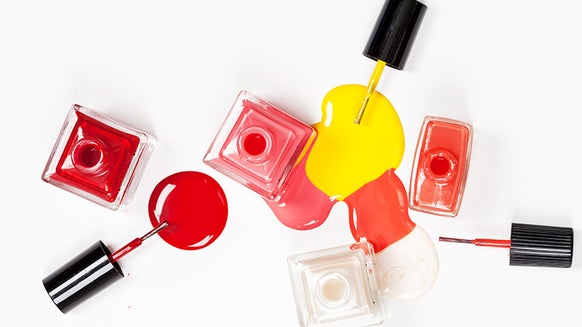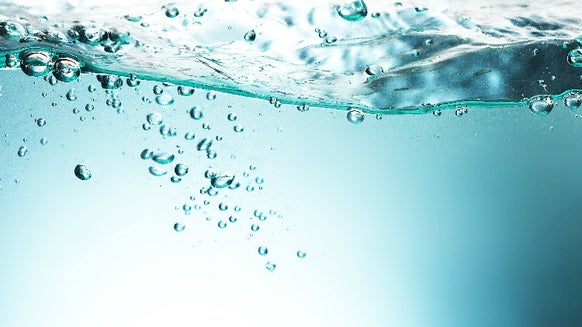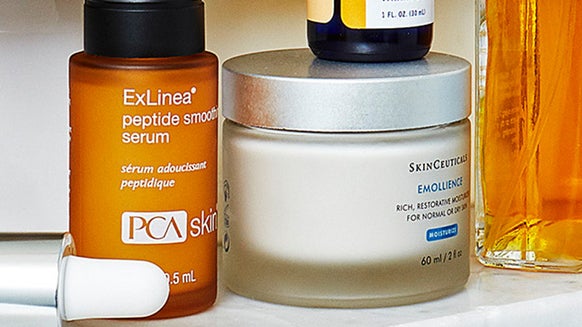Decoding Sun Protection: What Does SPF 50 Really Mean?
We can all agree that sun protection is a non-negotiable part of any skin care routine. Thanks to all the advancements and innovations in skin care technology, our sunscreen options have never been better. But while it’s easy to understand why we need sun protection, choosing the right sunscreen isn’t always as straightforward as the higher the SPF, the better.
Not many truly understand what those numbers on a sunscreen label mean, or why some bottles flaunt high SPF numbers when most dermatologists and skin care pros rarely recommend anything higher than SPF 50. As we break down everything you need to know about sun safety, we delve into the common myths surrounding sun protection and separate fact from SPF fiction.
Table of Contents:
- What Is SPF 50?
- SPF 30 vs. SPF 50: Comparing SPF Values
- Why is Sun Protection Important?
- What Factors Affect Sunscreen Efficacy?
- How to Choose the Right SPF
- Fact or SPF Fiction: Debunking Common SPF Myths
- The Bottom Line
What Is SPF 50?
SPF stands for sun protection factor and measures your sunscreen’s ability to protect your skin against UVB rays. That’s right—SPF only applies to UVB rays. While both UV rays increase the risk of skin cancer, unlike the longer wavelengths of UVA radiation, UVB rays don’t penetrate as deeply into the skin. They do most of their damage to the skin’s surface, causing sunburn, blisters, and discoloration.
Pre-FDA labeling guidelines, many believed that an SPF number is a multiplier that determines how long you’re protected from the sun. Meaning, if your skin normally takes five minutes to redden or show signs of sunburn, wearing a sunscreen with SPF 10, for example, would mean having 50 minutes of sun protection.
Going by this definition, it’s easy to assume higher SPFs would offer the best type of protection—but that’s where it gets tricky and confusing. For one, this doesn’t consider several factors that could affect the effectiveness of your sunscreen. This includes skin type, sweat and water exposure, the heat intensity, location, and whether you’re using the product exactly as directed.
Today, sunscreen products must abide by FDA labeling guidelines and are tested to measure just how much UVB exposure it takes to cause sunburn when wearing sunscreen compared to without. This number is then reflected as the product’s SPF value. A sunscreen with SPF 50 on its label means it has been tested to block up to 98 percent of the sun’s UVB rays and allows two percent of UVB to reach your skin.
SPF 30 vs. SPF 50: Comparing SPF Values
We get it. With all these numbers surrounding sunscreens, choosing the right SPF can be a real head-scratcher. If SPF 50 can shield your skin from 98 percent UVB, then wouldn’t SPF 70 or 100 be better?
Not exactly. In fact, Dr. Diane Berson, a dermatologist and member of the MDSolarSciences Scientific Advisory Council, stresses that no sunscreen, regardless of SPF, can offer 100 percent protection. “There is no statistical significance to using an SPF over 50. Products with higher SPF values may be misleading and give consumers a false sense of security. When customers see a product marketed as an SPF 100+, some may think that means they’re protected from 100 percent of the UVB rays, or that the product will work all day. There’s no such thing as total sunblock—and all products must be reapplied in accordance with the FDA guidelines,” Dr. Berson explains.
So, what makes a value of 50 the optimal SPF? “Protection afforded by products over SPF 50 is only incremental,” says Dr. Berson. While SPF 100 sunscreens can block 99 percent of UVB rays, it’s not a hall pass to bask in the sun like there’s no tomorrow. It’s not an apply-and-forget kind of deal either as high-level SPFs last the same amount of time as low-number sunscreens.
According to the American Academy of Dermatology (AAD), sunscreens need to be reapplied every two hours when outdoors, even in winter and on cloudy days, and after swimming or sweating.
“An SPF 50 offers a higher level of protection and is best for those with a history of skin cancer or those that are fair-skinned or at higher risk for skin cancer,” explains Dr. Berson.
Why is Sun Protection Important?
While choosing the right sunscreen formula and SPF level may require a bit of homework, it’s good to remember that any sunscreen, regardless of formulations or SPF value, is a crucial part of your daily skin care routine. And while catching some rays and getting that sun-kissed glow can make us feel and look good, the fact remains that any change in color—including tanning—is a sign of UV-induced damage.
UV rays silently harm your skin cells and pave the way for trouble down the line. We’re talking premature skin aging, sunspots and discoloration, and even skin cancer. Wearing sunscreen isn’t just about protecting your skin from blisters and that lobster-red burn, it’s also one of the best ways to preserve and maintain healthy and youthful-looking skin.
What Factors Affect Sunscreen Efficacy?
SPF 50 sunscreen means the product has been tested to filter 98 percent of UVB rays—but that’s under controlled lab conditions. In real life, how good your sunscreen will be in protecting your skin depends on several factors:
Application amount: Using sunscreen is one thing. Applying the correct amount is another. According to the Skin Cancer Foundation, you should use enough to fill a shot glass on all exposed areas of the body (including areas you typically miss, such as the ears, feet, hands, lips, and eyelids) and a nickel-sized drop just for your face. For sunscreen sprays, apply until your skin achieves an even sheen. Frequency of application: All sunscreens need to be reapplied every two hours and after sweating, toweling off, or engaging in water activities, regardless of SPF levels. This includes water-resistant sunscreens, which typically last for 40 to 80 minutes.Sunscreen formulations: The type of sunscreen you choose can make application and reapplication easier and more convenient, depending on your preferences and the part of the body you want to protect. Creams and gels are best for applying to the face; SPF sticks are easier to use around the eyes; and sprays or mists are perfect for those hard-to-reach places.Skin type: Your sunscreen should complement your skin type to ensure you’re not aggravating any skin conditions or triggering unwanted reactions. Creams and lotions with moisturizing ingredients work best for dry skin, while lightweight gels and water-based formulas are good for oily skin. Sensitive and acne-prone skin should opt for mineral sunscreens to reduce the risk reactions and prevent inflammation from worsening.Broad-spectrum: We know that SPF only applies to UVB rays, but what about UVA radiation? That’s where broad-spectrum protection comes in. Broad-spectrum means your sunscreen protects your skin from both UVA and UVB rays. To be marked broad-spectrum, a sunscreen product needs to undergo rigorous testing and must first meet FDA requirements.
How to Choose the Right SPF
Any SPF is good SPF, but for optimal sun safety, experts recommend going for at least an SPF 30 sunscreen. However, keeping in mind that several factors can knock down your SPF’s efficacy, your best bet is an SPF 50 sunscreen that can provide your skin with ideal sun defense. A versatile option for everyday use, broad-spectrum SPF 50 sunscreens can protect your complexion regardless of your outdoor activities, changes in the UV index, skin conditions, and risk factors.
If you're searching for Conscious SPF, you can check out our great selection.
To help get you started on your sun safety journey, here are the best SPF 50 sunscreens you can find on Dermstore.
Fact or SPF Fiction: Debunking Common SPF Myths
Despite the importance of sun protection in our everyday skin care routine, it’s also one of those aspects of skin care that always seems to be surrounded by plenty of misguided beliefs. While we’ve already discussed that higher SPF doesn’t always mean better protection, sunscreen myths don’t stop there. Before you pick out your daily sun-safety buddy, make sure you’re not falling for any of these common SPF misconceptions.
False. Your body only needs a tiny amount of UVB to manufacture vitamin D. And because no SPF can filter 100 percent of UVB rays, the amount of UVB that reaches your skin (anywhere from one to seven percent) is more than enough for your body to produce the vitamin D it needs to regulate your calcium and phosphate levels.
False. UV
Mostly true ,but not always . UVA rays can pass through glass, so if you’re on a long car ride or working next to a window, you’re still exposing your skin to harmful light rays.
False. Excessive sun exposure can harm all skin types and colors, although damage may be harder to see on deeper-toned skin. But just because you can’t see it clearly doesn’t mean it’s not there. According to the AAD, sun protection is a must for everyone as skin cancer doesn’t discriminate based on race, gender, or age.
False. No sunscreen is truly waterproof. At best, sunscreens can stay water-resistant from 40 to 80 minutes, which means you’re still going to need to reapply the product, especially after sweating or getting out of the water.
False. We’re all here for SPF-infused foundations and lip glosses, but you’re not likely to use enough amount of the product to get the right sun protection. So, while SPF in makeup products work great to boost sun safety, a traditional sunscreen is still the best way to defend your skin from the sun.
The Bottom Line
Sun safety starts with knowing the importance of sunscreen use and choosing the right SPF for your everyday needs. While the addition of any SPF to your skin care routine is already a huge step towards better sun defense, it’s important to note that SPF values offer varying levels of protection. Products tagged with SPF 100+ may seem like the logical choice, but medical professionals and skin care experts stress that you need not go higher than SPF 50. Versatile and efficient, a broad-spectrum SPF 50 sunscreen can shield your skin from harmful UVA and UVB rays as you go from running quick errands to all-day outdoor activities.

Janeca Racho is a Journalism graduate with over 15 years of writing experience. After getting her start in public relations and advertising, she made the switch to freelance writing and began working for various lifestyle, fashion, and travel brands. Her love for all things skincare has led her to beauty reporting and research for the last ten years. Writing for several hair and beauty blogs, she reports on anti-aging staples, trending brands and products, must-have ingredients, and health and wellness.
